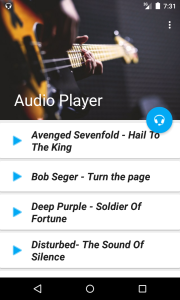I go through phases of complacency and disbelief when thinking about web accessibility.
Working at SitePoint HQ, I’m fairly lucky in that everybody here is on the same page when it comes to accessibility; we spend time making sure our sites are accessible, that our applications degrade gracefully, that our JavaScript doesn’t create barriers for screenreader users. We do this ad-hoc, without even a firm sense of whether our target demographic ultimately requires it. And for no reason other than it’s our job. In the books, articles and other content we publish, best practice is right at the top of the priorities list.
But not everyone in our community agrees, as the original forum thread over the Target case and the recent catfight on TechCrunch illustrated. And I think that’s pretty sad — not because these folks are disagreeing per se (I’d rather see healthy debate than tacit compliance), but because so many of the anti-accessibility arguments are ignorant rhetoric, which cloud the issue and make useful discussion harder for everyone. They generally follow a familiar pattern, taking a peculiarly American line in favour of market forces determining everything, and criticizing any idealistic intentions as political-correctness gone mad.
Whatever. I’m not going to get into the rights and wrongs of that particular case; it’s an issue that cuts very deeply to the heart of what we think of as our “rights”, and that’s one can of worms I just don’t want to open. I know what I think; you know what you think; enough said.
But I am going to take this opportunity to re-inforce what I believe is the nature of our professionalism. We should make an effort to create accessible content, Anonymous, because it’s part of our job. And frankly, it doesn’t take much effort; it’s not difficult.
Nobody’s expecting perfection. Nobody in their right mind ascends to the notion that everyone is equal, or that life is fair. People aren’t equal, and life isn’t fair. But that makes it even more important that we attempt to redress imbalances when we encounter them.
What we do is not rocket science — I won’t say it’s easy, but it’s not spectacularly difficult either. HTML was designed with accessibility in mind, and it provides the hooks and meta-information to make content more accessible: alt text for images; caption, summary and headers for tables; good heading structure; semantic use of paragraphs, lists and other structural markup. Used properly, our tools will do the job. Used badly, they create barriers.
And technology is the one area of human endeavour where that simply isn’t acceptable. Technology is not like the physical world, where there are good, tangible reasons why some things can never be accessible. A person who’s blind will never win the Grand Prix; someone in a wheelchair will never be able to climb Uluru. Technology is not like the physical world — technology can take any shape. Technology is our slave, and we can make it do what we want.
If we call ourselves professionals, we owe it to our clients, their clients, and ourselves, to do our job properly. A chef must care about health, a builder must care about safety, and we must care about accessibility.
Get educated!
Here are some external links that will help you to build more accessible web sites:
- Dive Into Accessibility — Mark Pilgrim’s excellent introduction to web accessibility
- Accessify — Tools, wizards, articles and tutorials on web accessibility
- WebAim — Information, training, resources, guidelines and standards for web accessibility and disability access to the web
And a few SitePoint resources:
- Build Your Own Web Site The Right Way Using HTML & CSS — Ian Lloyd’s comprehensive book for beginners shows how to build websites properly from the ground up
- Accessible JavaScript: Beyond the Mouse — an overview of techniques for making JavaScript accessible to the keyboard as well as the mouse
James is a freelance web developer based in the UK, specialising in JavaScript application development and building accessible websites. With more than a decade's professional experience, he is a published author, a frequent blogger and speaker, and an outspoken advocate of standards-based development.





